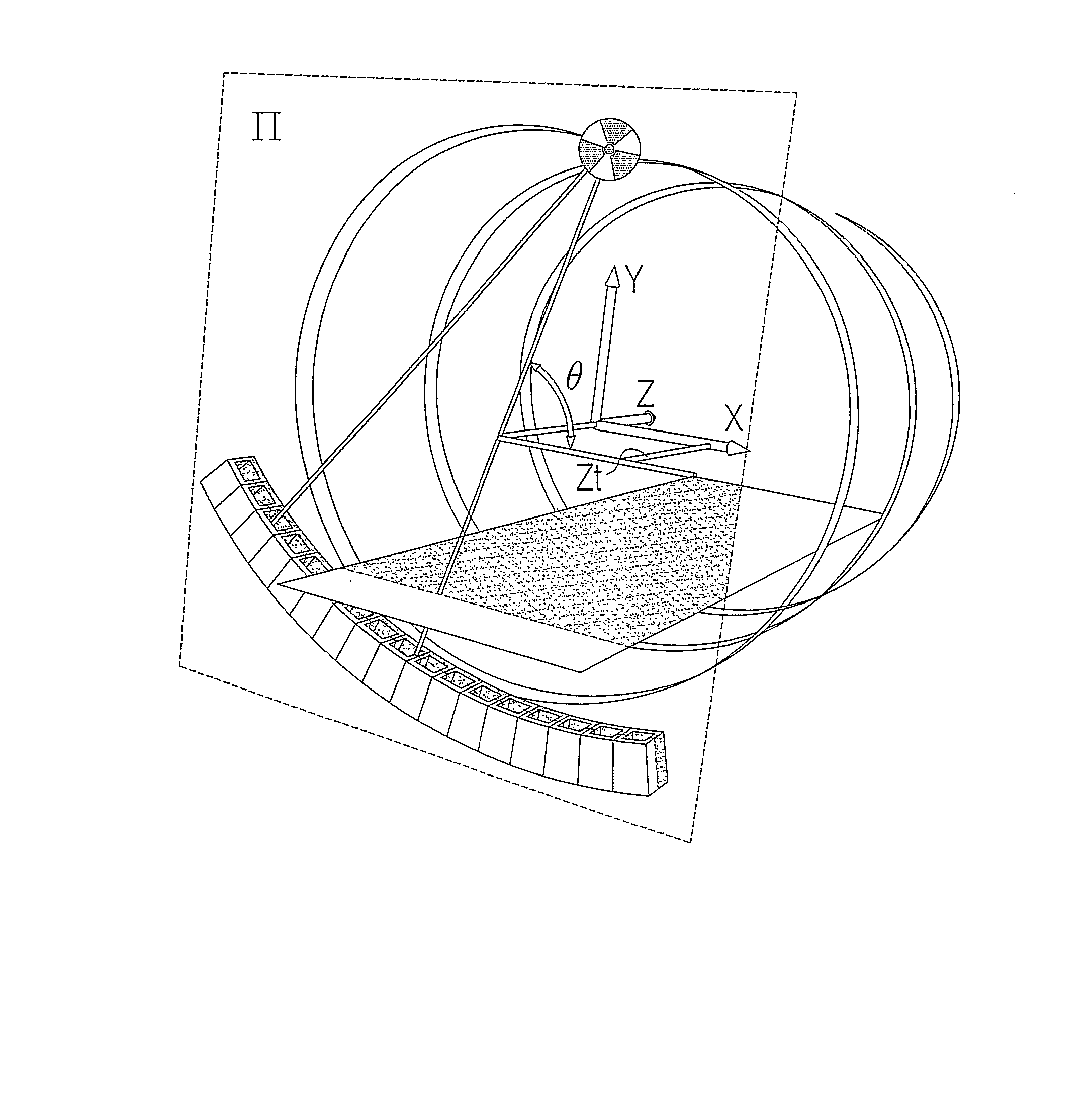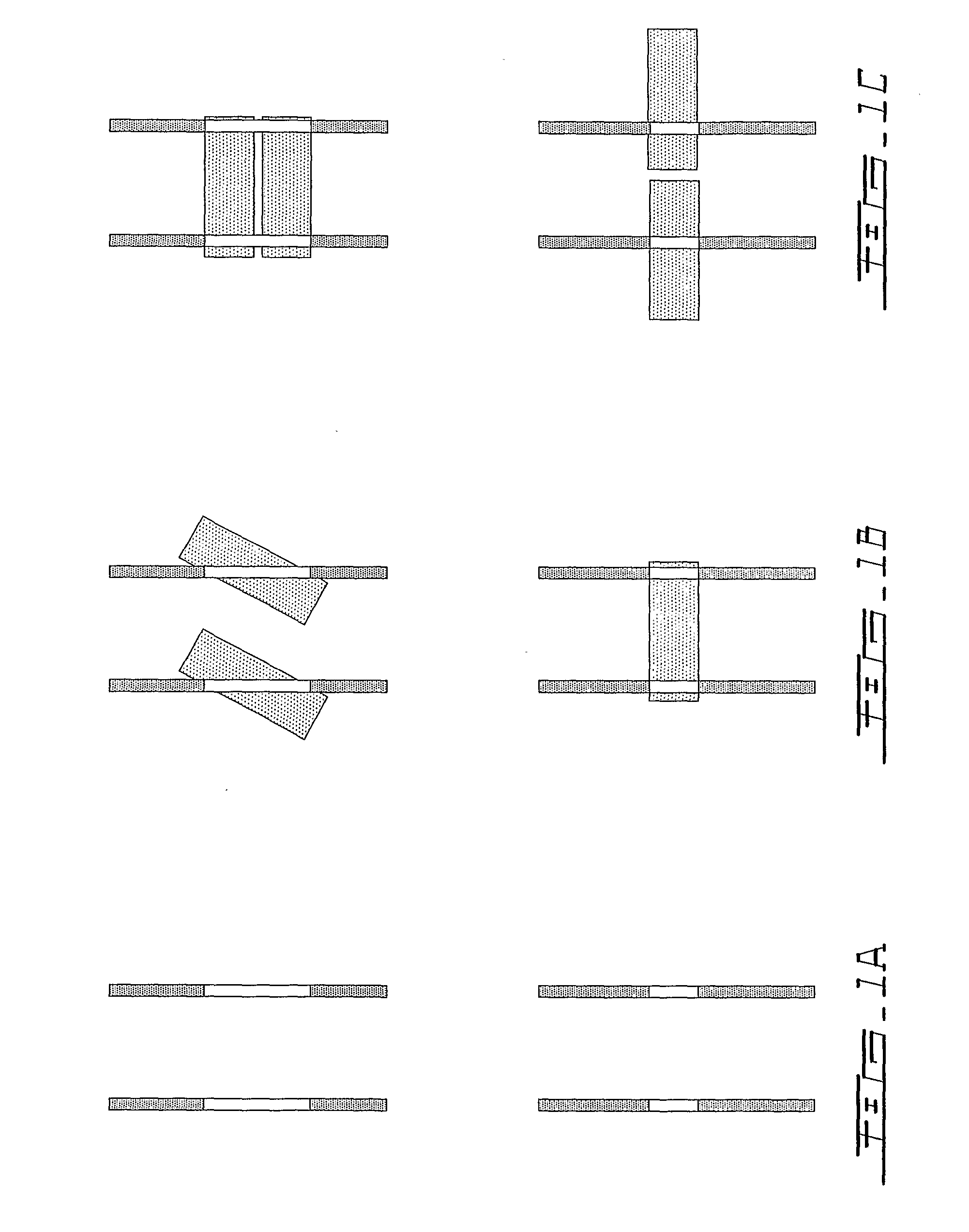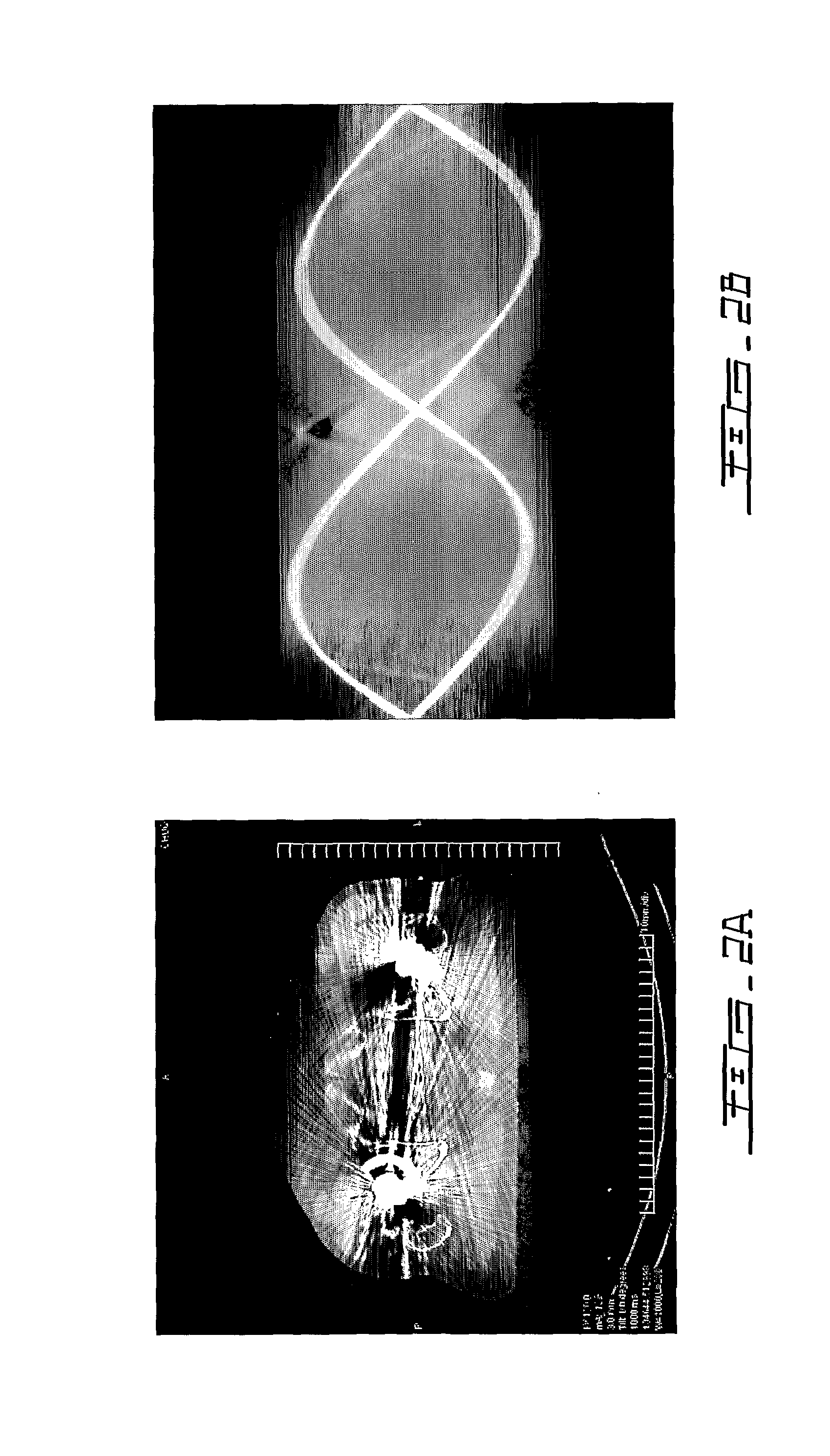3D Localization Of Objects From Tomography Data
a technology of tomography and object, applied in tomography, instruments, nuclear engineering, etc., can solve the problems of difficult to break the components of single seeds, severe undersampling of seeds, and heavy corruption of ct images, etc., and achieve the effect of facilitating detection
- Summary
- Abstract
- Description
- Claims
- Application Information
AI Technical Summary
Benefits of technology
Problems solved by technology
Method used
Image
Examples
Embodiment Construction
[0044] As a solution to the seed reconstruction problem of the prior art, the present invention is based on the reconstruction from the raw tomography data (sinograms) directly. In sinograms, a single seed is typically represented with several hundred samples. This allows reconstruction with unprecedented accuracy: in a test implementation, the position of seeds have been reconstructed with a maximal error of 0.45 mm. Furthermore, sinograms are artifacts free which makes the task of seed detection much easier with respect to the existing approaches. For example, FIG. 5 shows the sinogram for three closely spaced seeds whose “sines” can be easily distinguished. Moreover, the proposed approach is general enough to be used for the reconstruction of any point-like, linear or curvi-linear object that leaves a trace in the sinogram.
[0045] Principle of the reconstruction
[0046] Scanner Geometry
[0047] Being the most widely spread, only the helical scanner geometry will be discussed herein...
PUM
 Login to View More
Login to View More Abstract
Description
Claims
Application Information
 Login to View More
Login to View More - R&D
- Intellectual Property
- Life Sciences
- Materials
- Tech Scout
- Unparalleled Data Quality
- Higher Quality Content
- 60% Fewer Hallucinations
Browse by: Latest US Patents, China's latest patents, Technical Efficacy Thesaurus, Application Domain, Technology Topic, Popular Technical Reports.
© 2025 PatSnap. All rights reserved.Legal|Privacy policy|Modern Slavery Act Transparency Statement|Sitemap|About US| Contact US: help@patsnap.com



